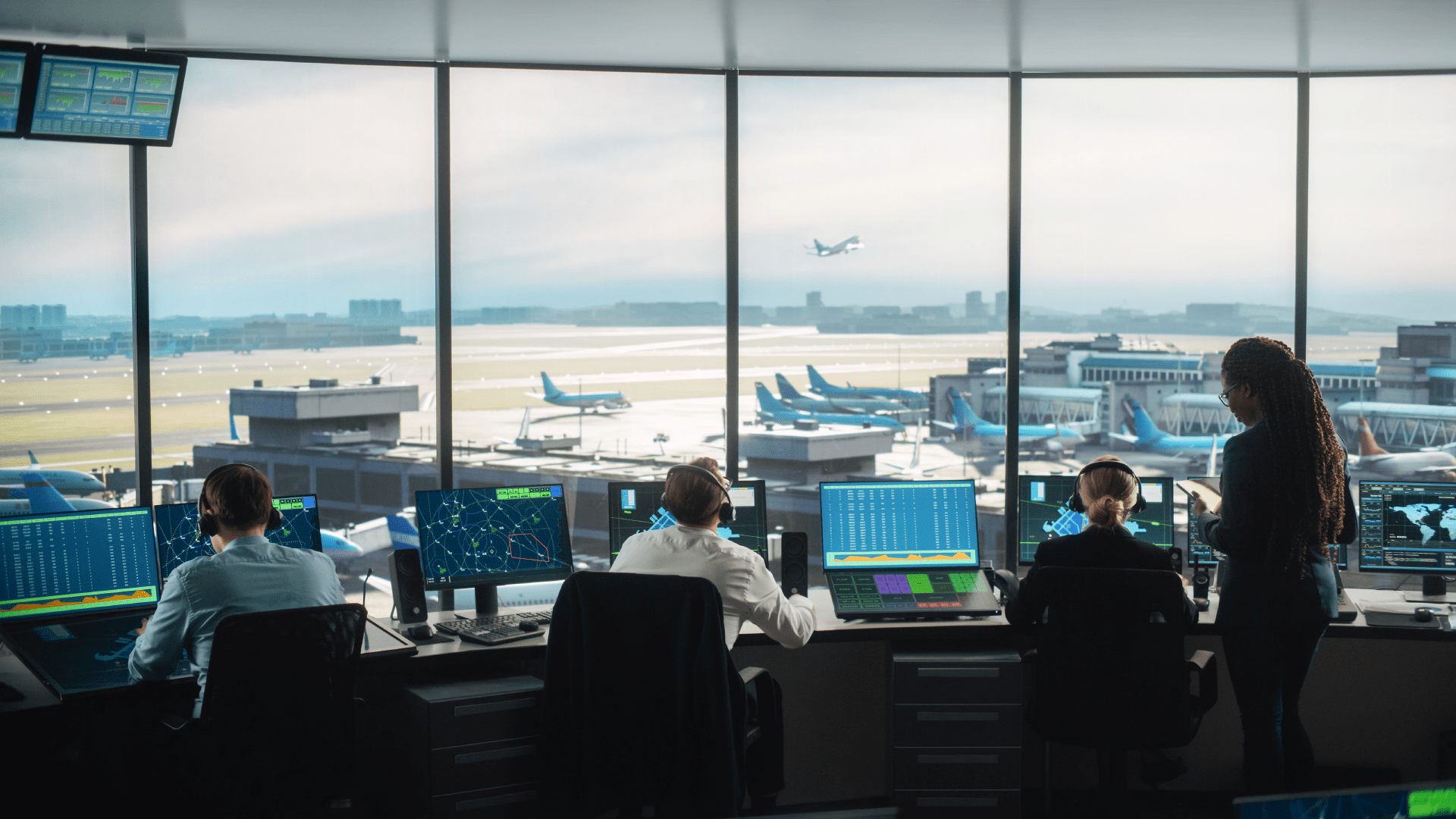Transitioning to future-ready ATM

Add to this the rise of new technologies such as artificial intelligence (AI) and machine learning (ML), and it’s clear that we need to rethink how we manage our airspace.
Ahead of Airspace World 2024, we talk to the NACO experts Clive McNabb, Airport Digitisation Lead and Yasudha Sahi, Air Traffic Management Systems Lead to examine what the future holds for ATM.
First of all, what do we mean by ‘future-ready’ ATM solutions? And why are they important right now?
ATM is one of, if not the most complex sectors of the aviation industry. It has, therefore, always heavily relied on “tried and trusted” technologies to establish and maintain the high levels of safety expected from the aviation world.
Airports and air navigation service providers (ANSPs) are now increasingly turning to technology to achieve the escalating demands on safety, sustainability, and efficiency. When implemented correctly, modern ATM solutions can unlock new value to meet these demands, heralding in a new era for airports, making this sector future-ready and adaptive.
The transition to modern ATM solutions will take the industry beyond “the coaxial to fibre” phase, to the true “digital transformation” phase, merging and respecting the “tried and trusted” solutions, current advanced technologies, and critical ATM data with the world of AI, ML, virtual centres (including Digital Towers) and interoperable solutions.

ATM solutions can unlock new value and make airports and air navigation services future-ready and adaptive.
You talk about AI – what role does it play in enhancing the performance of ATM?
AI applications in the ATM world are already a reality. Although the ATM world is often perceived as risk averse, the road from ‘hardwire’ to ‘IP’ has been expedited by the developments and progression experienced in other parts of the aviation industry – as well as increasing traffic demands.
The ATM world is awash with crucial data which impacts and influences the aviation industry as a whole. The application of this data, with systems enhanced with AI and ML, will strike the balance of greater efficiency and reliability whilst being able to predict and adapt your operations based on the airports’ aeronautical data.
As just one example, the combination of automated weather observation systems with advanced surface movement guidance control systems means that controllers can redirect traffic based on patterns learnt and adapted to suit an airport’s real-time situation.
There are of course many challenges when it comes to AI enhancements in ATM. But there is also a huge opportunity – and it’s something which we have been embracing across the aviation industry in our approach, not least in the development of digital towers.

There is a huge opportunity when it comes to AI enhancements in ATM – and it’s something which we have been embracing across the aviation industry in our approach.
When it comes to digital towers, what advice would you have for airports who are contemplating the switch? What should they look out for?
Conventional Air Traffic Control Towers (ATCTs) come with various challenges – each unique to different countries, airports, suppliers, and ANSPs. For digital towers, the most obvious focus is in the investment required to procure the system, as well as the viability of supporting infrastructure.
As this is fairly new territory for many in the sector, our first step is always to tailor the approach and investigate the feasibility and benefit of a digital tower solution for our clients – and whether they align with their airport’s strategic vision. There are also regulations, business models, and operational needs that should be developed in parallel with the solution.
With over 75 years of experience in the aviation sector, NACO provides airports looking to transition to digital ATM solutions with the strategic business advisory, along with a clear roadmap for a seamless implementation to digital ATM, all augmented with our technological know-how. At the heart of this is our collaborative framework to ensure that we tailor the integration plan to create winning strategies for value creation, both now and in the future.
What are the benefits of a digital tower?
First up, affordability. While it’s a significant upfront investment, in the long run a digital tower is considered more affordable than a conventional ATCT. Its affordability is most apparent in three ways:
- When the Virtual Control Centre can be located outside the airport’s prime real estate
- If the line of sight is feasible with a single or multiple camera tower versus a conventional tower structure
- When it can be implemented on remote and/or multiple airports/runways with shared resources/systems that reduce OPEX and not just CAPEX.
Second, it’s a very flexible solution, both operationally and in management terms. A centralised virtual control centre can manage several airports, either at the airport or another remote site, allowing staff the available space of the facility and the possibility to be located in strategic locations.
Thirdly, digital towers are sustainable as they no longer need a conventional ATC tower. Not only does this simplify the construction works, but it also reduces construction material together with a lower energy consumption. Relocation of these towers is also much simpler in the case of airport expansion and is advantageous for flexible operations.
Learn more
There is no “one size fits all” solution in ATM. NACO’s track record from masterplanning to design and operational readiness means that we understand how to customise solutions to our clients’ needs through our offering of strategic business advisory and a clear roadmap for seamless integration, combined with our technical know-how. At the heart of our value proposition is collaboration, all with the aim of creating synergistic gains by aligning with our clients’ vision.
Curious to learn more? Come and see us at Airspace World 2024 in Geneva between 19-21st March 2024. Hear our thoughts on Wednesday 20th March at 3.30pm in the Indra Theatre.